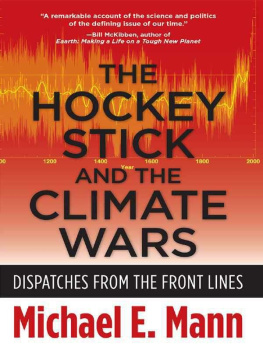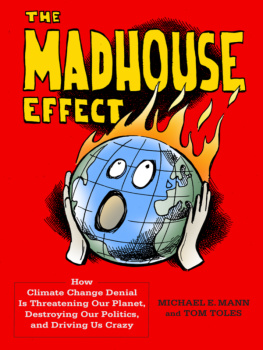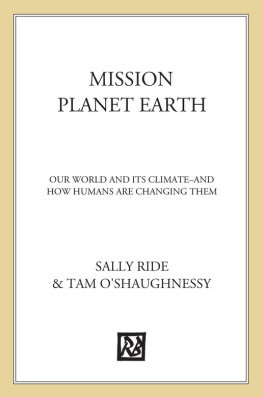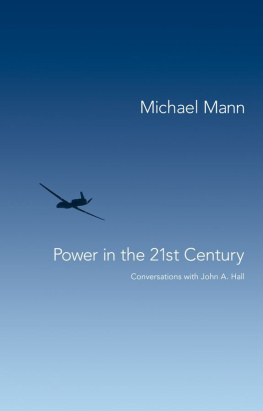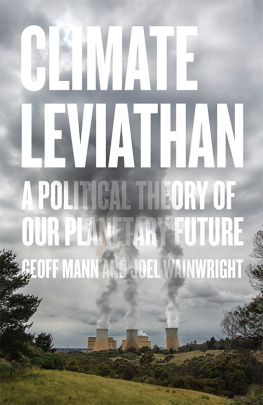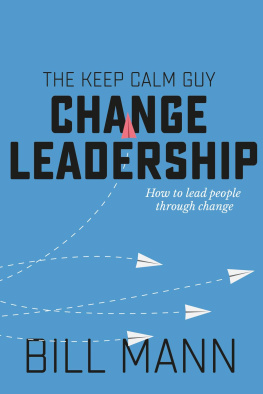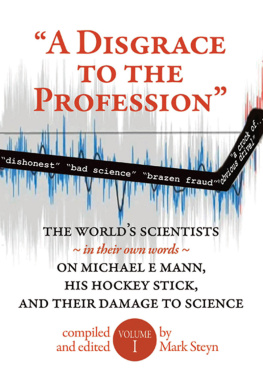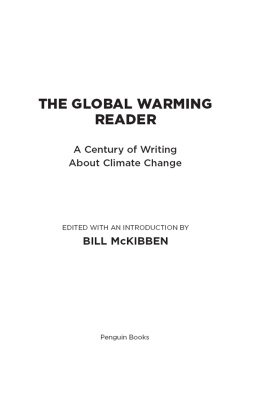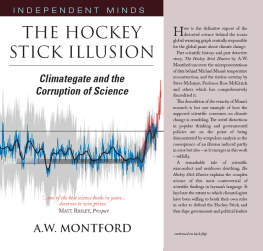THE
HOCKEY
STICK
AND THE
CLIMATE
WARS
THE
HOCKEY
STICK
AND THE
CLIMATE
WARS
DISPATCHES FROM THE FRONT LINES
Michael E. Mann
COLUMBIA UNIVERSITY PRESS
NEW YORK
Columbia University Press
Publishers Since 1893
New York Chichester, West Sussex
cup.columbia.edu
Copyright 2012 Michael E. Mann
All rights reserved
E-ISBN 978-0-231-52638-8
Library of Congress Cataloging-in-Publication Data
Mann, Michael E., 1965
The Hockey Stick and the Climate Wars / Michael E. Mann.
p. cm.
Includes bibliographical references and index.
ISBN 978-0-231-15254-9 (cloth : alk. paper)ISBN 978-0-231-52638-8 (ebook)
1. Climatic changesPublic opinion. 2. Climatic extremesPublic opinion. 3. Global warmingPublic opinion. 4. Climatology. 5. Environmental policy. I. Title.
QC903.M36 2012
577.22dc23 2011038813
A Columbia University Press E-book.
CUP would be pleased to hear about your reading experience with this e-book at .
References to Internet Web sites (URLs) were accurate at the time of writing. Neither the author nor Columbia University Press is responsible for URLs that may have expired or changed since the manuscript was prepared.
This book
is dedicated to
Megan Dorothy Mann
and to
the memory of
Jonathan Clifford Mann
Contents
AAAS | American Association for the Advancement of Science |
AEI | American Enterprise Institute |
AGU | American Geophysical Union |
AMO | Atlantic Multidecadal Oscillation |
AP | Associated Press |
API | American Petroleum Institute |
AR4 | IPCC Fourth Assessment Report (see also IPCC) |
CEI | Competitive Enterprise Institute |
CEQ | White House Council on Environmental Quality |
CFACT | Center for a Constructive Tomorrow |
CFCs | Chlorofluorocarbons |
CID | Civil Investigative Demand |
CO2 | Carbon dioxide |
CRU | Climatic Research Unit (of the University of East Anglia in the United Kingdom) |
ENSO | El Nio/Southern oscillation |
EOF | Empirical orthogonal function |
EPA | Environmental Protection Agency of the U.S. government |
EPW | Environment and Public Works Committee of the U.S. Senate |
FOIA | Freedom of Information Act |
GCC | Global Climate Coalition |
GFDL | Geophysical Fluid Dynamics Laboratory |
GISS | Goddard Institute for Space Studies (see also NASA) |
GRL | Geophysical Research Letters |
IPCC | Intergovernmental Panel on Climate Change |
LDEO | Lamont Doherty Earth Observatory (of Columbia University) |
MBH | Mann, Bradley, and Hughes |
MBH98 | Mann, Bradley, and Hughes 1998 article in Nature |
MBH99 | Mann, Bradley, and Hughes 1999 article in Geophysical Research Letters |
MCA | Medieval climate anomaly (see also MWP) |
MWP | Medieval warm period (see also MCA) |
NAO | North Atlantic Oscillation |
NAS | National Academy of Sciences |
NASA | National Aeronautics and Space Administration |
NCAR | National Center for Atmospheric Research |
NOAA | National Oceanographic and Atmospheric Administration |
NSF | National Science Foundation |
OSTP | Office of Science and Technology Policy of the White House |
PC | Principal component |
PCA | Principal component analysis |
PNAS | Proceedings of the National Academy of Sciences |
SEPP | Science and Environmental Policy Project |
TAR | IPCC Third Assessment Report (see also IPCC) |
UC Berkeley | University of California at Berkeley |
U. Mass | University of Massachusetts |
U. Va | University of Virginia |
WMO | World Meteorological Organization |
WR | Wegman Report |
WSJ | Wall Street Journal |

On the morning of November 17, 2009, I awoke to learn that my private e-mail correspondence with fellow scientists had been hacked from a climate research center at the University of East Anglia in the United Kingdom and selectively posted on the Internet for all to see. Words and phrases had been cherry-picked from the thousands of e-mail messages, removed from their original context, and strung together in ways designed to malign me, my colleagues, and climate research itself. Sound bites intended to imply impropriety on our part were quickly disseminated over the Internet. Through a coordinated public relations campaign, groups affiliated with the fossil fuel industry and other climate change critics helped catapult these sound bites onto the pages of leading newspapers and onto television screens around the world. A cartoon video ridiculing me and falsely accusing me of hiding the decline in global temperature was released on YouTube and advertised through a sponsored link that appeared with any Google search of my name. The video eventually even made its way onto the CBS Nightly News . Pundits dubbed the wider issue of the hacked e-mails climategate, and numerous investigations were launched. Though our work was subsequently vindicated time and again, the whole episode was a humiliating oneunlike anything Id ever imagined happening. I had known that climate change critics were willing to do just about anything to try and discredit climate scientists like myself. But I was horrified by what they now had stooped to.
My thoughts turned to an event from a decade earlier. In August 1999, I attended a meeting in Arusha, Tanzania, as a lead author for an upcoming report of the Intergovernmental Panel on Climate Change (IPCC). From my hotel room, I could see one of the worlds great wonders, Mount Kilimanjaro, with its magnificent ice cap lying just degrees from the equator. The ice cap, by the end of the twentieth century, had already shrunk to just a third of the area it covered in 1936 when Ernest Hemingway wrote The Snows of Kilimanjaro, but it was majestic all the same.

